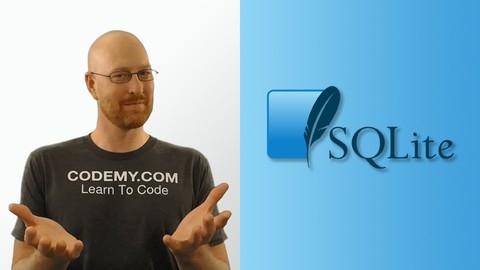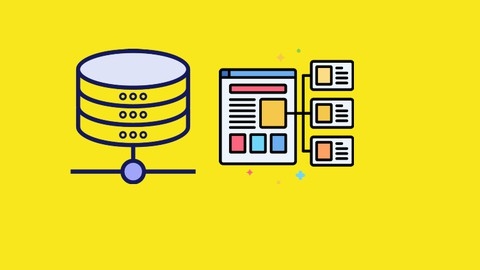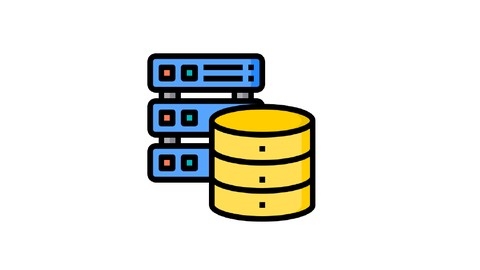Learning how to interact with databases using SQLite is a valuable skill for any programmer.
SQLite is a lightweight, embedded database system that’s ideal for building applications that need to store and manage data locally.
It’s easy to learn and use, and it’s a great starting point for those new to database technology.
Finding a good SQLite course can be a challenge, though, with so many options available.
You want a course that’s comprehensive, engaging, and taught by experts.
You also want to make sure it’s a good fit for your learning style and goals.
We’ve scoured Udemy for the best SQLite courses, and we recommend Intro To SQLite Databases for Python Programming as the best overall.
It covers everything from the fundamentals of SQLite and Python to building a full-fledged application and API using these technologies.
The course’s hands-on approach, numerous projects, and experienced instructor make it an excellent choice for learning SQLite and building real-world projects.
Of course, there are many other great SQLite courses available on Udemy.
Whether you’re a beginner or an experienced developer, we have a recommendation for you.
Keep reading to explore our top picks and find the perfect course to level up your SQLite skills.
Intro To SQLite Databases for Python Programming
The course starts by covering the installation process, ensuring you have the necessary tools like Python, Sublime Text, and Git Bash Terminal set up.
You’ll then dive into using SQLite with Python, learning how to create a SQLite connection and a database table.
From there, you’ll explore various SQL operations like inserting one or multiple records into a table, querying data with fetchall, and formatting results.
The course covers essential concepts such as primary keys, where clauses for filtering data, updating and deleting records, ordering results, combining conditions with AND/OR, and limiting the number of results returned.
If you need to remove a table entirely, you’ll learn how to drop a table as well.
The course then guides you through building a simple database app with Python, covering functions to show all records, add new records, delete records, add multiple records at once, and implement where clauses for filtering.
SQLite for beginners
The course covers all the essential topics you need to become proficient in SQLite, starting from the very basics.
You’ll begin by learning what SQLite is and how to download and install it on your system.
The course also guides you through setting up SQLite Studio, a popular tool for working with SQLite databases.
Once you have the environment ready, you’ll learn how to connect to SQLite databases and explore some basic SQLite commands using the sqlite3 tool.
The course dives deep into database concepts and teaches you how to retrieve and manipulate data using the SELECT statement.
You’ll learn techniques like sorting with ORDER BY, removing duplicates with DISTINCT, and filtering data with the WHERE clause.
The course also covers handling NULL values and understanding SQLite data types and aliases.
Creating and modifying database tables is a crucial skill, and this course covers it thoroughly.
You’ll learn how to create tables using the CREATE TABLE statement, insert data with INSERT INTO, update existing records with UPDATE, and delete records with DELETE.
The course also teaches you how to drop tables using the DROP TABLE statement.
The course explores various SQLite operators, including BETWEEN, IN, LIKE, and GLOB, which are essential for querying data effectively.
You’ll also learn about the LIMIT clause and how to use subqueries in different contexts, such as in the WHERE and FROM clauses.
Table joins are a fundamental concept in SQL, and this course covers the different types of joins, including LEFT JOIN, INNER JOIN, CROSS JOIN, and SELF JOIN.
This will enable you to combine data from multiple tables and perform complex queries.
The course also covers aggregate functions like AVG, COUNT, SUM, MAX, MIN, and GROUP_CONCAT, which are essential for performing calculations and summarizing data.
You’ll learn how to use the GROUP BY clause to group data and the HAVING clause to filter groups based on specific conditions.
SQLite Databases | Python Programming: (Build App and API )
You’ll start by learning the fundamentals of SQLite, including setting up the database server, understanding database concepts, and executing common SQL commands like SELECT, INSERT, UPDATE, and DELETE.
Next, you’ll dive into Python programming basics such as data types, variables, lists, dictionaries, operators, conditional statements, loops, and functions.
This will prepare you for building applications that interact with SQLite databases.
The course then guides you through creating a desktop application using Python’s Tkinter library and SQLite.
You’ll learn how to set up the application interface, connect to the database, and implement CRUD (Create, Read, Update, Delete) operations.
You’ll also learn how to build an API (Application Programming Interface) using Python’s Django framework and SQLite.
This includes setting up a Django project, creating models, serializers, views, and mapping URLs.
You’ll even learn how to test your API using Postman.
Throughout the course, you’ll work with hands-on projects and code examples, ensuring you gain practical experience.
The course covers installing necessary tools like Python, Jupyter Notebook, DB Browser for SQLite, and Postman on different operating systems.
SQL Bootcamp - Hands-On Exercises - SQLite - Part I
This course starts with the basics of querying data using SELECT statements and gradually builds up your skills through hands-on exercises covering advanced concepts like joins, subqueries, and data manipulation.
You’ll learn how to retrieve specific columns from tables, filter data based on conditions, sort results, limit the number of rows returned, and remove duplicates.
The course dives deep into functions for manipulating data, grouping records, and filtering groups using HAVING.
As you progress, you’ll tackle more complex queries involving subqueries, different types of joins (LEFT, INNER, etc.), and set operations like UNION, INTERSECT, and EXCEPT.
The syllabus includes numerous coding exercises with solutions to reinforce each concept.
Towards the end, you’ll work on comprehensive summary exercises that tie together everything you’ve learned.
The course also covers integrating SQLite with Python, walking you through setup on Windows and Linux, using tools like Google Colab, GitHub, Anaconda, and Spyder.
Create a CRUD Contacts Database App with Python and SQLite
The course starts by guiding you through setting up Python and SQLite on your system, whether you’re using Windows or Mac.
You’ll learn how to install Python, the popular programming language, as well as SQLite, the lightweight database engine.
Next, you’ll dive into creating the application’s graphical user interface (GUI) using Tkinter, a standard Python interface.
The course walks you through designing the app’s layout, creating a logo image, and setting up the project directory and Python file.
You’ll import the necessary modules from Tkinter and create a Python class and application window.
A significant portion of the course focuses on adding various widgets to the app, such as buttons, labels, and entry fields.
This hands-on process is broken down into multiple parts, ensuring you understand each step thoroughly.
Once the GUI is in place, you’ll learn how to connect it to the SQLite database.
The course covers setting up database connectivity from the Python file and creating functions to handle various operations, like adding, editing, and deleting contacts.
Throughout the course, you’ll work on practical tasks, such as installing a DB browser for SQLite to visualize and manage your database.
You’ll also learn how to set the size for the application window, ensuring a user-friendly experience.
By the end, you’ll have a fully functional CRUD (Create, Read, Update, Delete) contacts database app built with Python and SQLite, complete with a graphical interface.
The course provides the source code, allowing you to refer back or build upon it as needed.
SQLite Made Easy
The course starts by introducing databases and SQL, the language used to interact with them.
You’ll learn about the history behind databases, giving you context for why they’re so important.
From there, you dive right into the practical aspects - browsing and fetching data stored in databases.
This is key for understanding how to retrieve information.
You’ll then create your own database and tables to start storing data.
The course teaches you how to narrow down results, delete unnecessary data, search for specific records, update existing entries, and insert new ones.
Dealing with unique records and views is also covered, which is crucial for data integrity.
An important part is learning to combine data from multiple tables - a powerful technique.
Finally, the course explores using SQLite directly in web browsers, which is handy for building browser-based applications.
You’ll gain practical experience creating, managing, and querying databases using SQL.
By the end, you’ll be comfortable working with SQLite databases.
SQLite Fundamentals - Comprehensive SQL course on SQLite
You’ll start by learning about SQLite databases, installation, and tools like SQLite Studio and DB Browser SQLite.
Next, you’ll dive into the fundamentals of SQL, including data definition language (DDL), data manipulation language (DML), and set operations like UNION and UNION ALL.
You’ll learn how to create, insert, select, delete, drop, alter, and update data in a database.
The course then explores string manipulation functions like SUBSTRING, INSTR, CONCAT, UPPER, LOWER, TRIM, LTRIM, RTRIM, and REPLACE.
You’ll also learn about various SQL operators, such as AND, OR, IN, BETWEEN, LIKE, and GLOB, as well as the LIMIT clause.
Moving on, you’ll study aggregate functions like SUM, COUNT, AVG, MAX, and MIN, along with the GROUP BY and HAVING clauses.
The course covers different types of joins, including INNER JOIN, LEFT OUTER JOIN, RIGHT OUTER JOIN, FULL OUTER JOIN, SELF JOIN, and the Cartesian product.
You’ll learn how to use subqueries with SELECT, INSERT, UPDATE, and DELETE statements, as well as correlated subqueries.
The course also introduces analytical functions like ROW_NUMBER, RANK, DENSE_RANK, PARTITION BY, CUMULATIVE SUM, MOVING AVERAGE, and MOVING COUNT.
Additionally, you’ll explore triggers, including AFTER and BEFORE INSERT, UPDATE, and DELETE triggers.
The course covers advanced concepts like the CASE statement, COALESCE function, views, NULLIF function, and indexes.
Throughout the course, you’ll work with practical examples and exercises to reinforce your understanding of SQLite and SQL concepts.
110+ Exercises - Python + SQL (sqlite3) - SQLite Databases
You’ll start with the basics, learning how to configure your environment and connect to a SQLite database.
From there, you’ll dive into hands-on exercises covering everything from creating tables and inserting data to more advanced concepts like one-to-many and many-to-many relationships.
The course is structured around two main projects: an e-learning platform and a forum application.
Through these projects, you’ll gain practical experience designing and implementing database schemas to model real-world scenarios.
You’ll learn how to handle one-to-many, many-to-one, and many-to-many relationships, as well as how to perform data manipulation using SQL’s DML (Data Manipulation Language).
It also covers important topics like SQL injection and how to prevent it, as well as how to work with CSV files and pandas DataFrames in conjunction with SQLite databases.
Additionally, you’ll learn how to create and use user-defined functions in SQLite, giving you even more power and flexibility.
The course includes a mini-project focused on a company database, where you’ll practice working with one-to-one and many-to-many relationships.
Throughout the course, you’ll have access to solution files for each exercise, allowing you to check your work and reinforce your understanding.
How To Create and Manage SQLite Databases From Scratch
The course starts by introducing you to SQLite databases and setting up the environment.
You’ll learn the basics of SQL for SQLite, including how to create tables, insert data, and use shell commands.
The course covers important concepts like datatypes, handling dates, and applying constraints.
As you progress, you’ll dive into intermediate SQL topics like advanced queries, joins, subqueries, functions, and views.
There are challenges along the way to reinforce your learning.
The course doesn’t stop there – you’ll master SQLite by learning about group by, having, transactions, triggers, and creating your own constraints.
You’ll even learn how to create read and write views, as well as implement foreign key constraints.
One of the standout features of this course is its coverage of using SQLite in Android Studio.
You’ll learn about the SQLiteOpenHelper class and how to query your database in Android applications.
This makes the course particularly valuable for mobile app developers working with SQLite databases.
Throughout the course, you’ll work with real-world examples and practical exercises, ensuring you gain hands-on experience with SQLite.
SQL Bootcamp - Hands-On Exercises - SQLite - Part II
You’ll start by learning how to create, modify, and manage database tables using DDL statements.
Numerous hands-on exercises will reinforce your understanding of concepts like PRIMARY KEYs, indexes, constraints (DEFAULT, UNIQUE, CHECK, NOT NULL), and FOREIGN KEYs.
The course also dives deep into establishing relationships between tables.
Once you’ve grasped the DDL basics, you’ll move on to DML, learning how to insert, update, and delete data in your SQLite databases.
The exercises will challenge you to write complex queries, ensuring you gain practical experience.
The syllabus dedicates entire sections to Views and Triggers, two powerful features that allow you to create virtual tables and automate database operations, respectively.
You’ll learn how to create, modify, and manage both through a series of exercises.
To solidify your learning, the course includes multiple summary sections with numerous exercises covering a wide range of SQLite concepts and techniques.
These exercises will test your ability to write complex queries, create tables with appropriate constraints, and design efficient database schemas.
Finally, the course explores integrating SQLite with Python, a popular combination for building data-driven applications.
You’ll learn how to connect to SQLite databases from Python, execute queries, and manipulate data programmatically.
The syllabus covers setting up development environments like Google Colab, GitHub, Anaconda, and Spyder on Windows 10 and Linux.
Throughout the course, you’ll work with hands-on exercises and their solutions, ensuring you gain practical experience with SQLite and its integration with Python.










